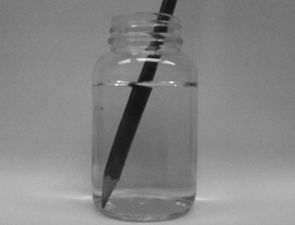Phil’s Findings #18: Elements of Life
14 November 2011


The human body is an object of immense complexity. It is quite staggering how a set of chemical reactions – starting from the moment of conception – can make our bodies grow and function the way they do, and ultimately give rise to our consciousness, our emotions, and everything that it is to be human. It is very easy to forget that our bodies are simply constructed from the chemicals elements, like anything else around us, both animate and inanimate. We are made from materials.
It is fascinating to imagine where the materials in our bodies have come from, and what they might have been before they were us. Within the first few seconds after the birth of our universe – the ‘big bang’ – only the very lightest elements were formed, including hydrogen, helium, lithium and beryllium. All the other elements were formed later inside dying stars, generated by nuclear fission and fusion, before being blasted out into interstellar space when the star goes supernova. At some point, a huge cloud of this interstellar dust fused together in space to create our sun, its planets, and indeed the Earth upon which we reside. Our planet, formed from ninety-two elements, eventually proved to be the perfect chemistry set for the formation of life. We are all, literally, made of star dust.
Although there are around sixty chemical elements present in the body, only twenty-seven have known biological functions. There is a cast of six elements that are absolutely fundamental to all life – hydrogen, carbon, nitrogen, oxygen, phosphorous and sulphur – these make up nearly 99% of the mass of life on Earth. Carbon plays a central role thanks to its versatile reactive behaviour, and is abundant in all organisms. There is a huge amount of oxygen and hydrogen in all life, mostly contained in the water that makes up a large proportion of the body’s mass (99% of a jellyfish is water, for example, a record in the animal kingdom). This is interpreted as evidence that life probably began underwater and later found its way onto land. Nitrogen is another abundant element in life, and is key in proteins and DNA. These four elements – carbon, hydrogen, oxygen and nitrogen – make up 96% of the mass of the human body. Phosphorous also plays a crucial role in the body, forming an important constituent of our bones and, and in many biomolecules in the body in the form of phosphate. Sulphur is part of many proteins, for example in keratin, the building block of our skin and hair. The mechanical strength and water resistance of these structures is derived from the strength of the sulphur–sulphur bonds in the keratin protein.
The six elements of life described above are all non-metals, but most of the remaining elements in the body are actually metals. The most abundant one in the body is calcium, and we contain on average 1 kg, 99% of which is contained in our bones and teeth. Other key metals include sodium and potassium, which are responsible for the generation of the electric charge which travels through our nerves, conveying messages to and from the brain, and iron which is a key component in haemoglobin, which constitutes the red blood cells responsible for carrying and delivering the oxygen we breathe.
We grow from nothing, being assembled by complex chemical reactions in the womb. We take in the chemical building blocks of life, firstly from our mothers and then from our food. Our bodies are built from the chemical elements of the Earth, and these are constantly replenished throughout our lifetime as we use them and dispose of them. The very elements that we are composed of have been on one hell of a journey to get into our bodies, first through space and then through the history of Earth. When we die, we will become part of the Earth again, and the atoms that once made your body will go on to be many other things.